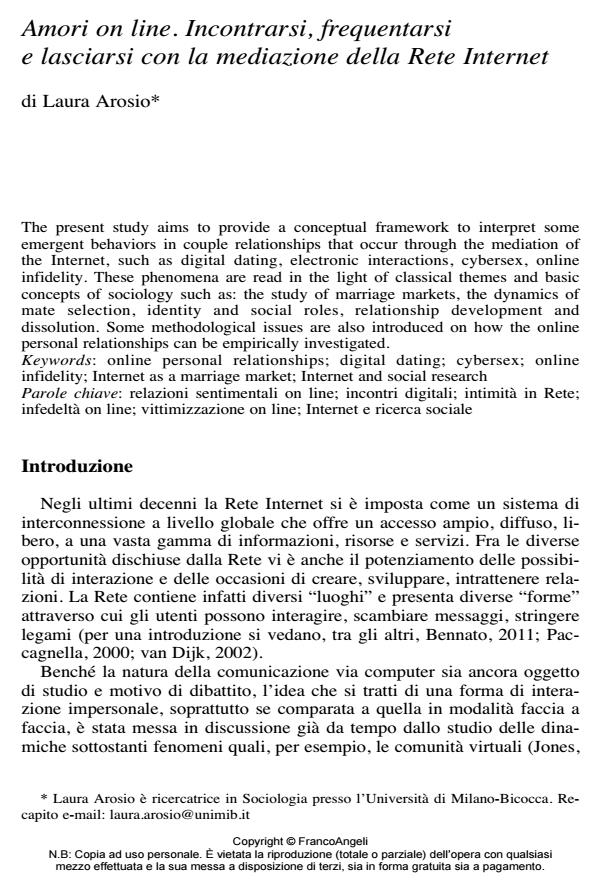Amori on line. Incontrarsi, frequentarsi e lasciarsi con la mediazione della Rete Internet
Journal title SALUTE E SOCIETÀ
Author/s Laura Arosio
Publishing Year 2013 Issue 2013/2
Language Italian Pages 27 P. 77-103 File size 144 KB
DOI 10.3280/SES2013-002005
DOI is like a bar code for intellectual property: to have more infomation
click here
Below, you can see the article first page
If you want to buy this article in PDF format, you can do it, following the instructions to buy download credits

FrancoAngeli is member of Publishers International Linking Association, Inc (PILA), a not-for-profit association which run the CrossRef service enabling links to and from online scholarly content.
The present study aims to provide a conceptual framework to interpret some emergent behaviors in couple relationships that occur through the mediation of the Internet, such as digital dating, electronic interactions, cybersex, online infidelity. These phenomena are read in the light of classical themes and basic concepts of sociology such as: the study of marriage markets, the dynamics of mate selection, identity and social roles, relationship development and dissolution. Some methodological issues are also introduced on how the online personal relationships can be empirically investigated.
Keywords: Online personal relationships; digital dating; cybersex; online infidelity; Internet as a marriage market; Internet and social research
Laura Arosio, Amori on line. Incontrarsi, frequentarsi e lasciarsi con la mediazione della Rete Internet in "SALUTE E SOCIETÀ" 2/2013, pp 77-103, DOI: 10.3280/SES2013-002005